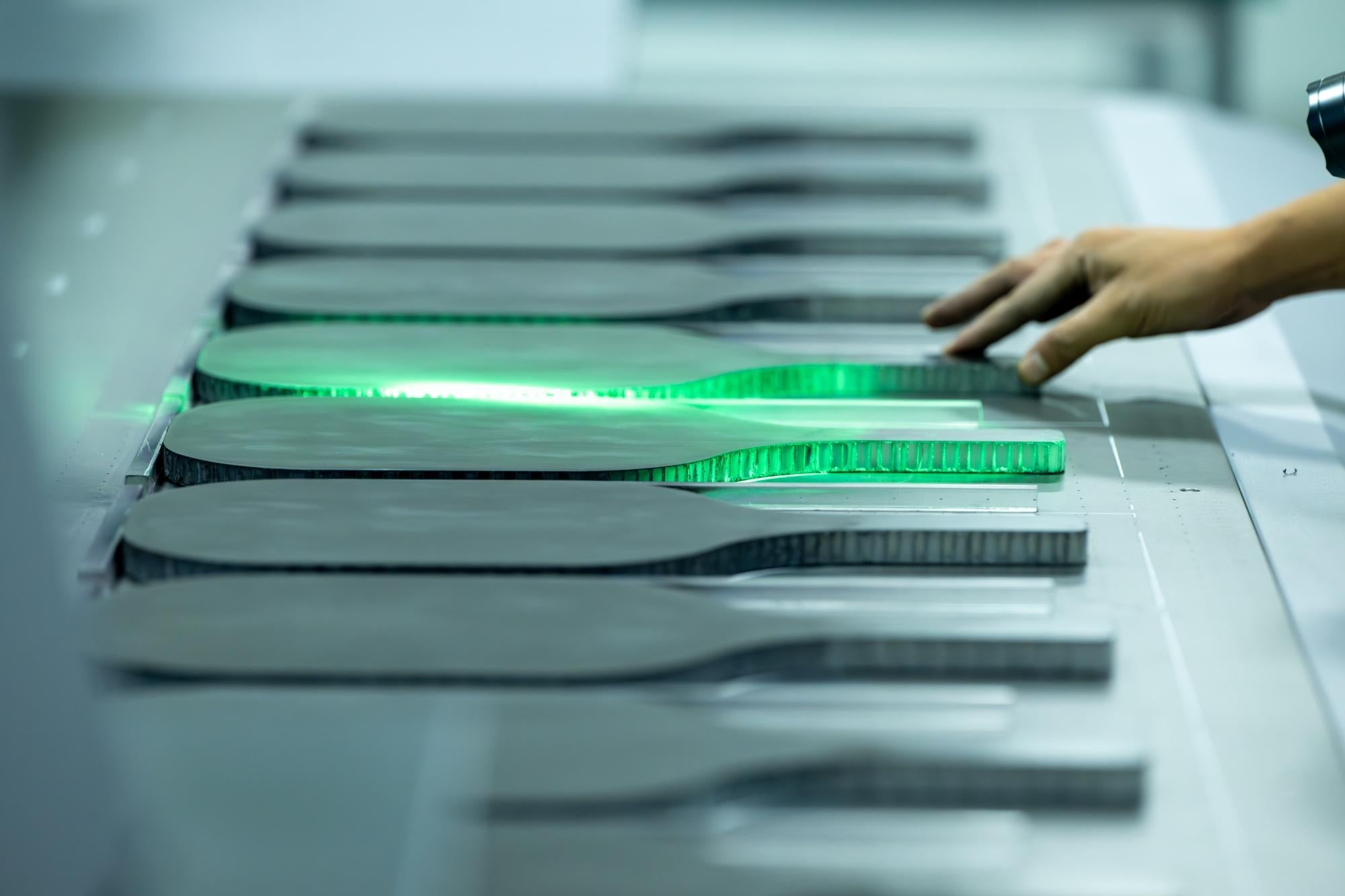
The Evolution of Pickleball Paddle Construction: From Gen 1 to Gen 4
As pickleball technology advances, so too do the materials and construction methods behind the paddles we play with. Over the past decade, paddle design has undergone a remarkable evolution—from simple cold-pressed builds to high-tech composite systems engineered for feel, power, and control.
At Joysent, we’ve worked with every generation of paddle manufacturing technology, offering a full range of options to suit every playing style. In this post, we’ll walk you through the development of paddle construction—from Gen 1 to Gen 4—and explain what makes each one unique.
🧊 Gen 1: The Era of Cold-Pressed Paddles
The first generation of pickleball paddles used cold-press lamination techniques. These paddles were created by bonding a polypropylene (PP) honeycomb core with carbon fiber face sheets at room temperature, using strong adhesives and a mechanical press to hold the structure together under high pressure.

Key traits:
-
Simple, reliable structure
-
Lightweight with a hard feel
-
Glue-based bonding between core and surface
While Gen 1 paddles laid the foundation for modern design, they often lacked long-term durability, and the feel at contact could be relatively stiff due to the absence of shock-absorbing materials.
🔥 Gen 2: High-Pressure Hot-Press Construction
The second generation brought in hot-press molding, combining PP honeycomb cores with resin-saturated carbon fiber face sheets. This assembly is compressed under high heat and pressure, allowing better bonding and shaping.

To reinforce the structure, foam edging and carbon yarn were added around the perimeter, improving both strength and edge protection.
Upgrades over Gen 1:
-
Stronger and more durable bonding
-
Improved feel and touch through thermal compression
-
Added foam and carbon wrapping for better structural support
Gen 2 paddles provided noticeable gains in consistency and durability, making them a favorite among intermediate players looking for a balance between control and power.
⚙️ Gen 3: Enhanced Cushioning with Perimeter Dampening
Popularized by brands like JOOLA, Gen 3 paddles introduced a significant change in vibration management and impact response. These paddles still follow the Gen 2 process but go further by incorporating additional cushioning materials along both paddle faces and the upper edge.

This upgrade results in:
-
Better shock absorption
-
More responsive rebound
-
Improved ball feel and comfort during play
Players began to notice a softer touch on dinks and drops, while still being able to generate decent power. Gen 3 became a turning point for paddles designed to reduce arm fatigue without compromising performance.
🚀 Gen 4: The Future, in Two Directions
Generation 4 paddle construction has split into two innovative approaches, each pushing performance to new heights.
▶️ 4S Construction (EVA Core Inserts)

This method—led by JOOLA's 4S models—builds on Gen 3 by inserting dual high-density EVA foam pieces into the throat of the paddle.
Benefits:
-
Further reduces hand and wrist vibration
-
Repositions the paddle’s balance point for more powerful swings
-
Refines the ball feel during off-center hits
It’s a smart evolution for players who loved Gen 3 but wanted even more control and comfort during aggressive rallies.
▶️ EPP Foam Core (CRBN-Inspired Innovation)

This alternative Gen 4 method uses EPP (Expanded Polypropylene) foam as the core material, instead of traditional PP honeycomb.
Combined with fiberglass fabric and resin, then molded in a high-temperature press, EPP cores deliver:
-
Higher energy transfer for powerful shots
-
Built-in shock absorption, reducing the need for perimeter cushioning
-
Greater structural integrity, minimizing breakdown over time
This approach offers a different feel—solid, quiet, and forgiving—making it ideal for players who value consistency and comfort in every shot.
🏁 Final Thoughts: Finding the Right Tech for Your Style
Every generation of paddle technology has its strengths. While Gen 1 and Gen 2 remain budget-friendly and widely used, Gen 3 and Gen 4 open the door to advanced performance and ergonomic benefits.
At Joysent, we manufacture paddles across all generations—because we know every player is different. Whether you prefer the raw power of honeycomb, the finesse of Gen 4 EVA inserts, or the consistency of an EPP foam core, we’ve got the tech (and the craftsmanship) to match your game.








